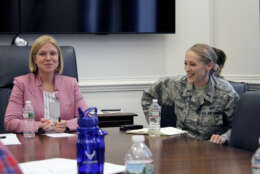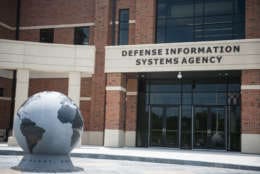zero trust
-
Col. Michael Smith, the director of the Army’s functional management office for zero trust and director of the unified network task force, said an ongoing gap analysis will look at weapons systems and control systems to see where zero trust capabilities can fit in.
August 29, 2023 -
The IRS has a detailed plan for achieving a state of zero trust on its information technology networks, which is something all agencies are under obligation to do for cybersecurity.
August 21, 2023 -
Federal CISO Chris DeRusha says using weak forms of identity authentication is like "driving without seatbelts."
August 15, 2023 -
During this exclusive webinar, top federal technology executives and industry experts will discuss what they've learned around zero trust strategy and the future of zero trust in government.
July 28, 2023 -
CISA’s zero trust model provides federal agencies with a clear path to follow, making it another vital tool to help define the zero trust journey — one that will help them meet the September 2024 deadline set by the Office of Management and Budget's memo.
July 19, 2023 -
Zero trust is far more than a cyber initiative, says SAIC’s Shawn Kingsberry, who encourages agencies to tackle it as an IT modernization effort. He shares three ways agencies can accelerate that journey.
June 06, 2023 -
The U.S. Patent and Trademark Office (USPTO) recently expanded a contract to improve the cybersecurity of its main databases, as well as move the agency to that all-important zero-trust architecture.
May 22, 2023 -
John Zangardi, the CEO of Redhorse Corp. and former CIO at DHS and the Navy, explains why knowing what’s on your network is foundational to achieving a zero trust architecture.
May 17, 2023 -
Hansang Bae, Public Sector chief technologist for Zscaler, joins host Mark Amtower on this week's Amtower Off Center to discuss zero trust, and why its adoption has been so slow.
April 24, 2023 -
There’s no denying identity access and management are critical to controlling federal assets, but we talk with VMware’s Don Bailey and Ingram Micro’s Tony Celeste about the importance of agencies adopting an enterprise security posture.
March 31, 2023 -
The Air Force has several pilot programs to bring its financial management system up to zero trust standards.
March 10, 2023 -
The CIO council convened a symposium to tackle "fraud prevention and detection" after potentially tens of billions in pandemic relief funds were stolen by fraudsters.
February 22, 2023 -
With Thunderdome, DISA moves to expand zero trust to more users and add a follow-on contract for applications.
February 20, 2023 -
A panel of federal and industry experts describe each of their approaches to achieving a zero trust architecture to improve the security of systems and data.
February 13, 2023 -
The past two years have catalyzed a fundamental shift in the way that government organizations need to think about security. COVID-19 introduced the need to securely enable remote work, an ongoing ransomware epidemic shows no signs of slowing down, and the Russian-Ukrainian conflict has stoked concerns of nation state attacks.
January 06, 2023














